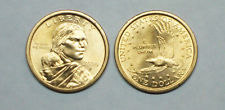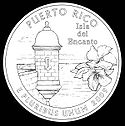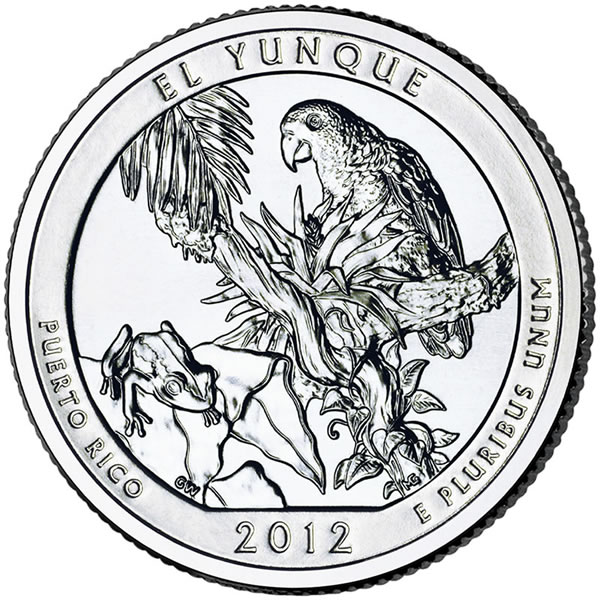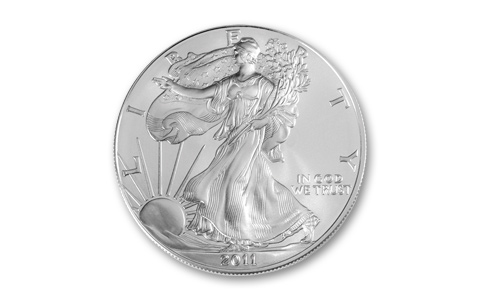The Golden Dollar’s front has Sacagawea portrayed in three-quarter profile. On her back, Sacagawea carries Jean Baptiste, her infant son. Six months pregnant when she joined the Lewis and Clark expedition, Sacagawea gave birth to Jean Baptiste early in the journey.
The Golden Dollar’s back has a soaring American bald eagle, our nation’s symbol. It is encircled by 17 stars – one for each state in the union at the time of the 1804 Lewis and Clark expedition.
The golden dollar coin features distinguishing traits including: a golden color, extra-wide border, smooth edge like the nickel’s, and specially designed alloy. Specifically, the Golden Dollar is: 8.1 grams in weight, 2 mm thick, and 26.5 mm in diameter. The coins physical makeup is a three-layer clad construction – pure copper sandwiched between and metallurgically bonded to outer layers of manganese brass. This alloy is a golden-colored material composed of: 77% copper 12% zinc 7% manganese 4% nickel. Including the copper core, the Golden Dollar’s overall composition is: 88.5% copper 6.0% zinc 3.5% manganese 2% nickel.
American sculptor Glenna Goodacre designed the obverse of the Golden Dollar coin, which features the likeness of Sacagawea, the young Shoshone woman who assisted Lewis and Clark on their exploration of the Louisiana Purchase almost 200 years ago.. The reverse design of the coin, by United States Mint Sculptor/Engraver Thomas D. Rogers, Sr., features a soaring bald eagle and 17 stars, one for each of the states at the time of the Lewis and Clark Expedition.







COMMENTS